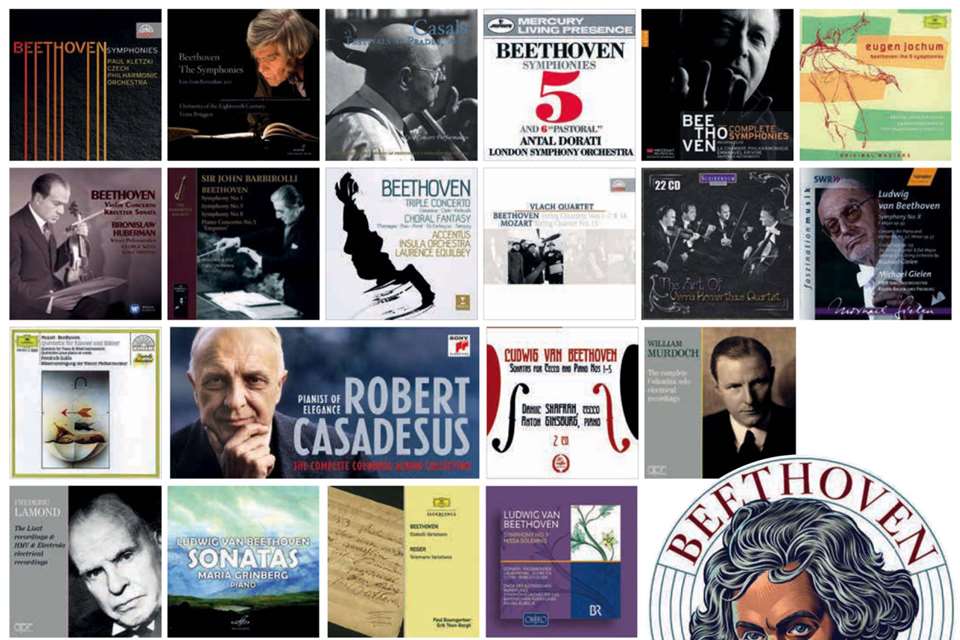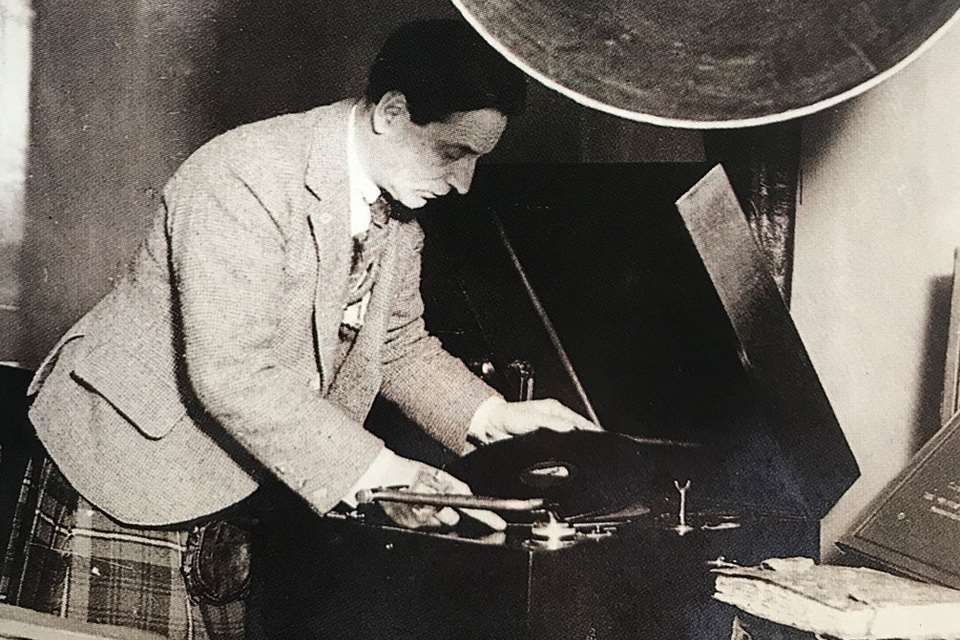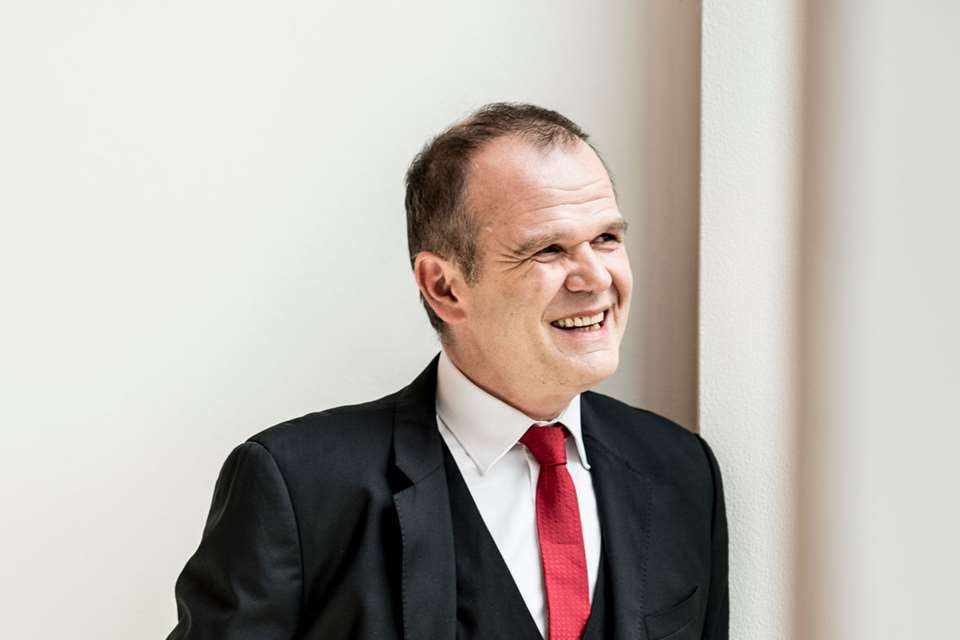Beethoven's Ninth Symphony: the greatest recordings
Richard Osborne
Wednesday, November 17, 2021
Richard Osborne traces the evolution of this great work over nearly a century of recordings
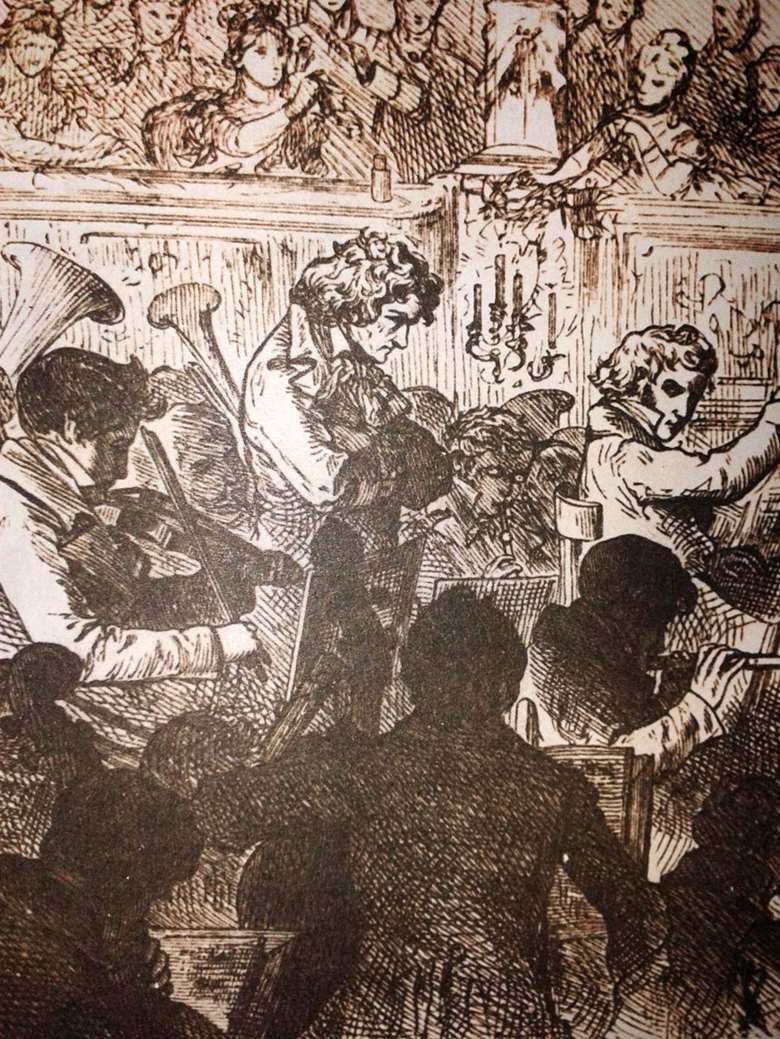
A 19th-century print depicting the premiere of the Ninth; and Schiller, author of the famous ode (Bridgeman Images)
No symphony has been more widely discussed, or been a greater divider of musical opinion, than Beethoven’s Ninth. One problem has been the difficulties the work presents to performers; another is the very nature of the symphony. ‘We shall never make head or tail of the Ninth Symphony until we treat it as a law unto itself,’ wrote Sir Donald Tovey in Essays in Musical Analysis, published in 1935. That at least admitted of a solution. Not so Professor Nicholas Cook, who entitled the final chapter of his superb 1993 Cambridge Handbook on the piece ‘Beyond Interpretation?’. With that question in mind, it’s perhaps as well to hang on to our hats; this can be no ordinary collectors’ guide.
The earliest recommendable recording, happily still extant, is the one Felix Weingartner made with the Vienna Philharmonic for English Columbia in 1935. Born in Austro-Hungary in 1863, Weingartner had been educated by a generation of musicians – Liszt and Wagner prime among them – who had witnessed at first hand the evolution of the Ninth as a performable work. It had been an arduous journey, from the shambles of the earliest performances in 1824‑26, through years of painstaking bar-by-bar rehearsal by the pioneering French conductor François-Antoine Habeneck, to an era of growing mastery and understanding in the period between Palm Sunday 1846, when Wagner first conducted the symphony, and 1912, when Heinrich Schenker published his Die neunte Sinfonie, a book, prodigious in its reach, that analysed the music, its problems in performance and its attendant literature.
With so much to absorb, it was as well that Weingartner was not only a fine conductor but a master of assimilation. Collectors who bought his 1935 recording must have thought themselves in seventh heaven, and probably remained so until the 1950s when new technologies rendered it temporarily redundant. By then, however, the Ninth was no longer quite what it once had been.
Subscribing to Gramophone is easy, you can choose how you want to enjoy each new issue (our beautifully produced printed magazine or the digital edition, or both) and also whether you would like access to our complete digital archive (stretching back to our very first issue in April 1923) and unparalleled Reviews Database, covering 50,000 albums and written by leading experts in their field.
To find the perfect subscription for you, simply visit: gramophone.co.uk/subscribe
A VERY GERMAN SYMPHONY
The Ninth is the most German of Beethoven’s symphonies. The text of the finale, carefully assembled from lines in Schiller’s famous ode, indicates as much. The symphony’s dedicatee was German; and, had Beethoven had his way, its premiere would have been in Berlin, not in Rossini-obsessed Vienna. And herein lies a problem. Though the First World War had left the Ninth largely unscathed, the Second had not. The work had long been prey to ideologies of differing inclinations but none proved more pernicious than that which appeared in the 1930s in Germany itself, where it was accorded special status.
English claims on the Ninth (or Choral as it’s been called here since its earliest performances) are based on nothing more than the £50 donation which triggered its formal commission in December 1822. As Tovey pointed out, the English have never been all that keen on the sublime, which may explain why the Ninth has never been a particularly happy hunting-ground for British conductors. Such, however, was the early power of British and American record companies that Weingartner’s 1926 London recording and Leopold Stokowski’s 1934 Philadelphia version both had the finale sung in English, and poorly translated English at that. (Stokowski’s 1967 London remake has the finale in German, albeit with the performers spread across several acres by Decca’s CinemaScope-style Phase 4 sound.) Weingartner’s 1935 Vienna account is in German but, pre-Anschluss, this British-made recording was insufficiently German for the Nazis. So it was that Eugen Jochum and, later, Karl Böhm (a wonderful Fidelio conductor whose several recordings of the Ninth are strangely pedestrian) were commissioned to make recordings that could be marketed as echt-Deutsch.
FURTWÄNGLER’S DILEMMA
But what of Wilhelm Furtwängler? A master of the Wagner-Beethoven repertory and a pupil of Heinrich Schenker, he if anyone was the Keeper of the Seal where the Ninth Symphony was concerned. So how did he deal with the Ninth during a time of war, and a German-induced war at that? With a mixture of panic and anger, it would seem, if his 1942 Berlin performance (much admired in some quarters) is anything to go by. No doubt the performance, given under the auspices of the Nazis’ bizarrely named cultural wing ‘Strength through Joy’, was a cri de coeur, a protest even. What emerges, however, sounds like pure hysteria.
The justly famous performance Furtwängler conducted at the reopening of the Bayreuth Festival in July 1951 is the very reverse. It speaks of tragedy giving way to what Beethoven’s great contemporary Wordsworth called ‘joy in the widest commonalty spread’. In Bayreuth, a stupendous account of the tragic first movement gives way to a joyous rendering of the second movement’s springtime revel and the deeper joy of the adagio-with-variations which follows (albeit with Furtwängler’s unaccelerated treatment of the variations occasionally straining the patience even of these players). Here are echoes of Beethoven’s Pastoral Symphony, that earlier ode to joy, not least in the pastoral perfection of the second-movement Trio where Furtwängler’s first oboe, clearly a piper to the gods, sounds as if he’s just strolled down from Mount Olympus.
The 1951 Bayreuth performance wasn’t released until after Furtwängler’s death in 1954. What few knew at the time was that EMI producer Walter Legge had tidied the thing up with inserts from rehearsal tapes. It was not until 2008 that the original Bavarian Radio recording was unearthed and transferred to CD by Orfeo. This, rather than the Legge, is the one to have.
When Furtwängler’s arch-rival Arturo Toscanini conducted the symphony in London in 1939, Neville Cardus suggested that the performance was too much an exercise in orchestral virtuosity, not least in the tragic first movement where the conducting rarely peered beneath the surface. This was not a popular view, either then or at the time of Toscanini’s last and finest Ninth, recorded live in New York’s Carnegie Hall in 1952. ‘Nowhere, perhaps, is Toscanini’s genius more apparent than in this work,’ wrote Edward Sackville-West in the 1955 edition of The Record Guide. ‘At the age of 85 he had lost none of the concentration and energy which he always brought to it; he sweeps irresistibly forward, as though in a single fierce creative impulse.’
The reading is one of the great high-wire acts in the history of conducting, one that gives a terrific impression of the piece while showing minimal regard for the way Beethoven conceived and shaped it, the first movement in particular. Still, Toscanini brought it off in a way no other similarly minded Italian has.
A PROBLEMATIC MOVEMENT
The problem with the first movement is that, defying precedent, it offers no clear narrative. Sonata form charts a course towards a home port, says Ralph Vaughan Williams in his great essay on the symphony, but here there is none – merely a complex network of themes on which we are invited to meditate. One unnamed 19th-century Russian put it well when he likened the movement to ‘a gigantic tree, whose branches, reaching towards the earth, have taken root and formed a forest round their forebear’. The late Deryck Cooke went as far as to see the thematic web spun by Beethoven as a precursor of Wagnerian music-drama.
I know of no commentator of repute who would disagree with Vaughan Williams’s analysis. How is it, then, that so many conductors are intent on imposing on the music some form of progressive narrative? Convenience, I guess, both for themselves and their hard-pressed orchestras. That and a continuing faith in metronome marks. By 1824 Beethoven’s practical skills as a conductor were virtually non-existent. Why, then, prefer Beethoven’s (very fast) metronome suggestion to the carefully considered, if somewhat convoluted written instruction Allegro ma non troppo, e un poco maestoso which appears at the head of the autograph manuscript? Given the addition of the words un poco maestoso to the already qualifying ma non troppo, this is plainly no ordinary allegro in 2/4 time.
The younger Beethoven’s manner of conducting, his contemporary Ignaz von Seyfried tells us, demanded ‘great exactitude in the manner of expression, minute nuances, the balance between light and shade, as well as an effective tempo rubato’, which is pretty well word for word what Wagner and Schenker advocated for the direction of this multifaceted first movement – a movement (let us not forget) that appears out of nowhere, without harmony and with no sense of forward propulsion until a rock face looms out of the mist at bar 17.
Toscanini has two tempos for the movement; crotchet=76 to get the show on the road, accelerating to Beethoven’s prescribed 88 as the excitement gathers. It works for him, though less well for fellow Italians such as Riccardo Chailly, dazzling as the Leipzig playing is, or Giovanni Antonini, whose recent period-instrument account of the Ninth, like John Eliot Gardiner’s 1992 equivalent, is not without merit. George Szell, implausibly, has just one tempo, etched out at a steady crotchet=72.
The kind of speeds Beethoven’s written instruction suggest are in the region of 72‑76. It is this which some of the best interpreters of the Ninth – Weingartner, Bruno Walter, Erich Kleiber, Kurt Masur – use as a general reference point. That pulse is varied but never quite as freely as it is by Klemperer, Karajan, Harnoncourt or, indeed, the altogether slower Furtwängler who was, and remains, sui generis where the realisation of the tragic import of the movement is concerned. But, then, we don’t actually hear Furtwängler’s tempos. We are too busy listening to the music.
A too maestoso approach, I should add, is as detrimental to the unfolding of the music as an over-quick one. Witness Georg Solti in his grand and frequently becalmed 1972 Chicago Ninth, both recordings directed by Carlo Maria Giulini, and Christian Thielemann, filmed and recorded with the Vienna Philharmonic in 2012, in a reading, drawn from deep within the Wagner tradition, that is otherwise rich in interest.
For the British companies who ruled the roost in the immediate aftermath of the Second World War, Vienna remained the place to go to record the Ninth: Karajan in 1947, Erich Kleiber in a typically well-articulated performance for Decca in 1952. Decca also returned to Vienna in the mid-1960s to record with Hans Schmidt‑Isserstedt a cycle that won favour with collectors looking for a return to Weingartner’s unassuming excellence. Schmidt-Isserstedt’s Ninth was also easy on the pocket, as Decca fitted 68 minutes of stereophonic sound on to a single LP. This involved removing repeats from the second movement’s sonata-form exposition, a commonplace omission in the days of 78s, though one to which Karajan made an unwelcome return in his four-sided late‑1970s LP set.
KARAJAN AND BRUNO WALTER
There are five studio recordings of the Ninth conducted by Herbert von Karajan, alongside three DVDs and more than a dozen off‑air recordings. Here the 1959 New York Philharmonic performance (a CBS radio transmission currently available on Archipel) is of particular interest; and not only because of the close interest taken in Karajan’s rehearsals and three Carnegie Hall concerts by Leonard Bernstein who, somewhat to Karajan’s annoyance, promptly made a documentary about the symphony on the back of his visit.
‘Brimming with vitality and compassion, combining an awareness of tradition with a strong feeling of passionate involvement’ was how Howard Taubman described the performance in The New York Times. And he was right. Karajan’s approach to the symphony was rooted in the German tradition, as you might expect of a musician who was a Schenker pupil at one remove, but also revealed a close interest in Toscanini’s unique technical mastery of the piece. (Gramophone’s William Mann was amazed to see that Karajan had the Toscanini LPs in the studio during the recording of the finale of his now legendary 1962 Berlin version.) As with most successful interpreters of the Ninth, Karajan had weighed and formulated his ideas early. In 1949 the London Times described an ill-attended Royal Albert Hall performance directed by him as ‘breathtaking’, not because of any particular dramatic or philosophical bias but because of the way the work’s many elements had been drawn together to create that all-important fourth dimension, ‘compact musical integrity’.
Here proportionality is key, which is why Karajan’s Ninth was always closer to Weingartner’s or Bruno Walter’s than to the more individualistic readings of Furtwängler, Klemperer and Toscanini. ‘Our idea is to let music speak for itself; we must neither distort it by a perfervid [over-ardent] execution, nor prejudice its effectiveness by a lack of warmth,’ writes Walter in his book Of Music and Music‑Making.
Walter himself was a superb exponent of the symphony’s three instrumental movements, more particularly the awe-inspiring first movement and the difficult-to-judge third from which, eschewing both rush and pretence, he conjures a mood of deep serenity. He was also a fine exponent of the finale, though, sadly, both his commercial sets had the choral section recorded in a separate location with American choirs that were never entirely at ease with the challenges, technical and linguistic, the music presents. Not that Walter is the only one to be poorly served by his choirs. Among conductors of note, Günter Wand, Mariss Jansons and Osmo Vänskä (the list could go on) satisfy in the first three movements, only to disappoint in the fourth.
Karajan’s regular choir was the Wiener Singverein, of which he was appointed conductor for life in 1950. They are at their freshest in his 1955 EMI Vienna recording with the Philharmonia Orchestra and the 1962 Berlin account, which, not without reason, has become the most collected of the Karajan Ninths. It is a superb performance, with a recording that has long been recognised by those in the trade as a model of refined naturalness. But, then, EMI’s 1955 Musikverein recording was very fine too. What was not so fine was EMI pressing technology, which explains why half a lifetime would pass before expert digital remastering revealed just how good the sound quality was, both on this and on the Philharmonia Orchestra’s 1957 recording under Klemperer.
OTTO KLEMPERER
The very name Otto Klemperer inspires awe. As with Weingartner, this is a classicist’s Ninth, albeit on a far grander scale. Tempos, subtly adjusted, are broader than the norm, except in the slow movement where Klemperer respects the character of a mediation that is cast in the form of a theme (or themes) and variations. Yet thanks to open textures, helped in part by the freshness and point of the Philharmonia’s wind- and brass-playing (a feature also of the 1955 Karajan performance), and the characteristic ‘spring’ Klemperer brings to the heaviest tread, nothing is laboured, nothing hangs fire. Klemperer also had at his disposal one of the few English choirs capable of doing justice to the Ninth: the specially recruited Philharmonia Chorus, assembled by Legge and trained by Wilhelm Pitz, Furtwängler’s chorusmaster in Bayreuth and Karajan’s former confederate in Aachen. Have no doubt, this is one of the great Beethoven Ninths.
There was much excitement in the year 2000 when Testament released a 1957 concert performance of the symphony that had been conducted by Klemperer at the same time as the studio recording. It’s quicker; yet it now sounds oddly tired by comparison, with (as was noted at the time) the complete Festival Hall cycle of symphonies and piano concertos evidently taking its toll on Klemperer. With the reprocessed studio recording now sounding so well, there can be no doubt which is the more collectible version.
For those who want a comparably ‘German’ Ninth, though on a slightly less intimidating scale than Klemperer’s, Kurt Masur’s 1974 Philips recording with the Leipzig Gewandhaus Orchestra wears its years well. He and his orchestra are a class act where the notes are concerned. As for Masur himself, he knows the work technically, and spiritually from within, as any conductor must.
NO GOING BACK
In the late 1980s, with the sale of traditional accounts of the Ninth falling away and even the tradition itself being questioned, there appeared a rush of recordings on period instruments. The great merit of Roger Norrington’s Beethoven cycle with the London Classical Players was the remarkable quality of the playing of the old instruments, something others who moved into the field – Roy Goodman’s Hanover Band and Christopher Hogwood’s Academy of Ancient Music – were unable to match, not least in a work as fraught with difficulty as the Ninth. Unfortunately, Norrington, who had not previously been in the habit of mistaking windmills for an advancing army, made the somewhat quixotic claim that the Ninth belonged to ‘the humane quicksilver thought-world of the Classical Period whose greatest progeny this is’. Worse, he made at least one decidedly eccentric call on a disputed metronome, giving the zing-boom soldier’s song midway through the finale a slow, almost dirge-like quality, after which the fugato that follows sounds as if it’s running with the handbrake on.
Several of the symphony’s metronome marks make minimal sense, though only one is impossible. We know from the Conversation Books that Beethoven’s nephew Carl failed to record the speed Beethoven barked out for the second movement’s pastoral Trio, simply logging it with same number as the opening section. Jonathan Del Mar’s 1996 Bärenreiter Edition leaves the entry blank (explaining the background in the separately published Critical Commentary). But, then, why would anyone mistake the tempo – as many conductors do, dashing through the music as one might dash through the Tritsch-Tratsch Polka – when as Vaughan Williams observed ‘wise conductors obey neither marking [semibreve or minim=116] but take a middle road’?
There would be no serious contender for the prize of the best ‘historically aware’ Ninth were it not for Nikolaus Harnoncourt, whose sonically imaginative 1991 Teldec performance with the Chamber Orchestra of Europe uses mainly modern ensemble instruments purposefully directed along established lines, albeit with a keen sense of how the sacred music of Beethoven’s era would generally be treated. No account of the Ninth can be taken seriously if it fails to do justice to the work’s spiritual aspect. Harnoncourt, unsurprisingly, very much does.
That spiritual core comes two-thirds of the way through the finale with the cry ‘Seid umschlungen, Millionen!’, followed at ‘Ihr stürtz nieder?’ by hushed voices over divided violas. For Tovey it is Beethoven showing ‘exactly the Palestrina instinct for the expression of awe, mystery, and infinity, in terms of pure concord and subtle intermixture of key’. There are those nowadays who affect to hear only ‘cosmic emptiness’ here. Vaughan Williams thought differently: ‘Never has the mystery of the universe been so portrayed.’ Anyone whose set of Karajan’s 1962 Berlin Ninth comes complete with extracts from his rehearsal of the last movement will know just how that sense of mystery is wrought.
BERLIN AND VIENNA AGAIN
At the fall of the Berlin Wall in 1989 the Ninth suffered a further ideological shift as the word ‘joy’, descriptive of one of the most enduring and life-enhancing of human emotions, was traded for ‘freedom’, a political buzzword that has always been notoriously difficult to define. This was for a Christmas Day celebration in Berlin’s Schauspielhaus conducted by an ailing and emotional Leonard Bernstein. With Bernstein, as the DVD reveals, in full ‘Stations of the Cross’ mode, the slow movement’s first 24 bars last an agonising four minutes.
Bernstein, whose 1960 New York recording of the Missa solemnis had been a revelation, possessed an instinctive feel for the Ninth as sacred rite. This is realised to poor effect in his under-resourced 1965 New York recording but his live 1979 Deutsche Grammophon recording with the Vienna Philharmonic is another matter. Here is a great performance, not only of the finale, but of the three purely instrumental movements. The reading is finely shaped – Bruno Walter’s or Karajan’s New York performances could well have been the template – but as always with Bernstein there are things here that are thrillingly his own.
Meanwhile, the old Berlin-Vienna rivalries have continued down the years. Sadly, there is no Ninth from Claudio Abbado’s 2001 Rome cycle with the Berlin Philharmonic. That said, Simon Rattle’s 2015 Berlin Ninth more than compensates. Rattle has pondered the work for many a long year. If his 2002 Vienna recording falls foul of a vain attempt to marry old-school German Beethoven with newfangled period practice – not to mention the bizarre decision to fly in for the occasion a none too well-prepared English choir – the later Berlin recording makes no such errors. External influences have been absorbed into a reading that is now indisputably Rattle’s own; the Berliners, as always, play like gods, and with decent soloists and the excellent Berlin Radio Choir there is nothing to frighten the horses other than a barked ‘Brüder!’, a Rattle-Halsey trademark, at bar 748.
THE NINTH ON FILM
Few collectors, I imagine, want to watch the Ninth Symphony, though students of conducting, and of the symphony itself, might care to track down a grainy black-and-white 1948 telecast of Toscanini directing his NBC forces. With the cameras fixed exclusively on Toscanini, what we have is a masterclass in the conductor’s craft, selflessly, unsparingly deployed: the beat continuous, with everything coming from the stick, the sweep and angling of the right hand, the face and the eyes. Extreme concentration is the key, from which flows the gathering of the music’s many sections into what Toscanini biographer BH Haggin has called ‘a single progression from one dazzling sublimity to the next’.
That telecast can carry no general recommendation. What can is the film Humphrey Burton was invited to make of a 1977 New Year’s Eve Berlin performance of the Ninth conducted by Karajan, whose direction of the symphony is another masterclass in the conductor’s craft selflessly deployed, as well as being an exemplary unfolding of the German tradition of playing it. Unlike Karajan’s own kitsch (some would say high camp) filmed realisations of the Ninth, Burton’s is an immaculately crafted documentary. The Ninth is the work that created the need for the modern conductor. In Burton’s film both ear and eye are presented with as complete an impression of the symphony’s inner workings, and the extraordinary business of its realisation in performance, as any of us could hope to see. And the finale is a joy.
TOP CHOICE
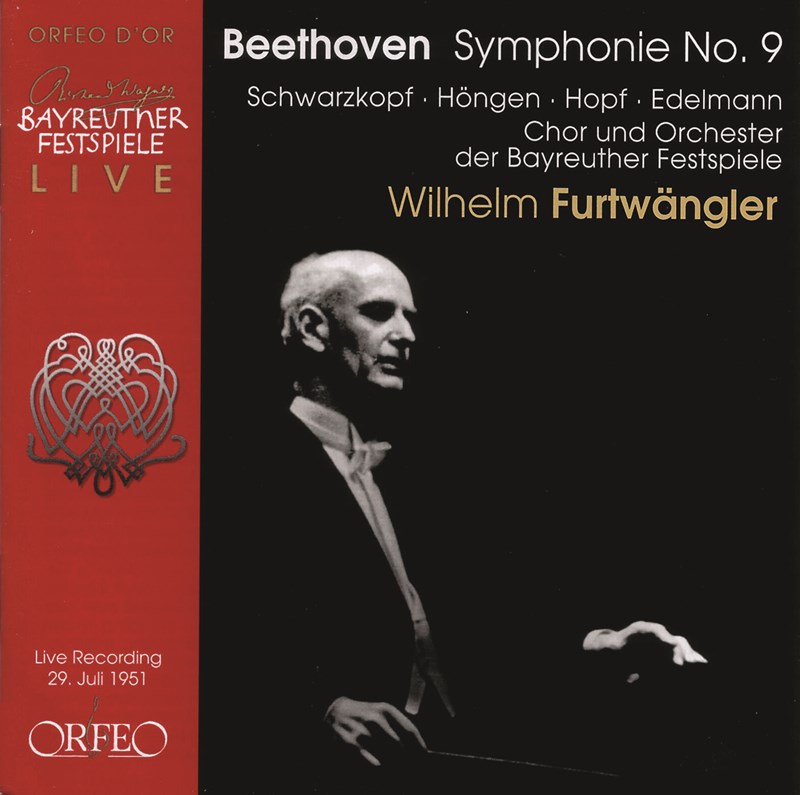
Bayreuth Fest Orch / Wilhelm Furtwängler
A viscerally thrilling, essentially recreative realisation of the Ninth Symphony by a conductor deeply versed in the music itself, as well as the 19th-century German culture from which it sprang and which later sustained it.
A SENSE OF PERIOD 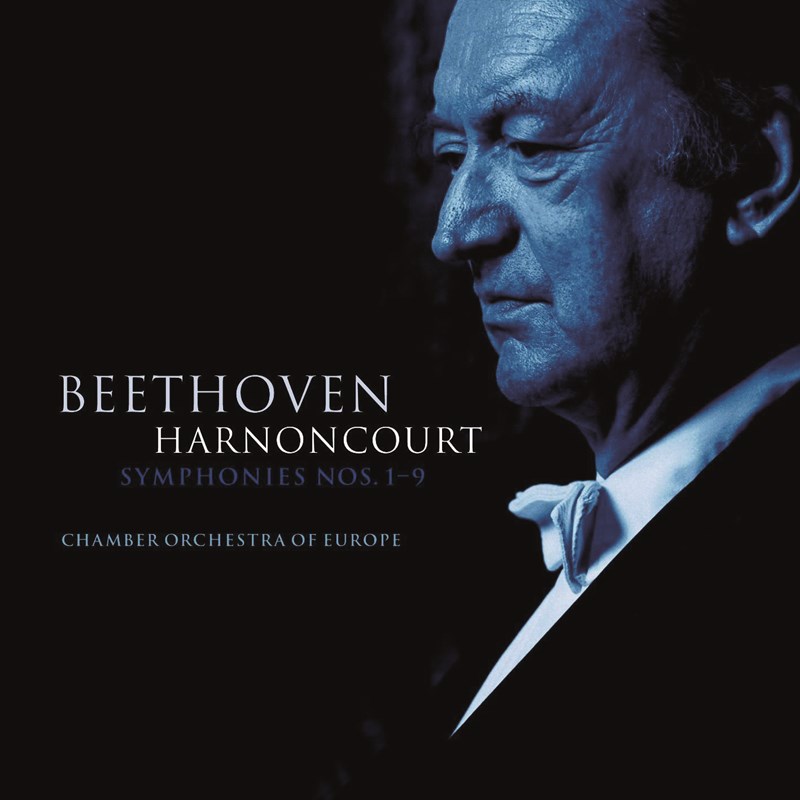
COE / Nikolaus Harnoncourt
Though the Ninth Symphony is beyond the pale of period performance, no one has managed to historicise it more skilfully or more effectively within the context of an expertly directed contemporary performance than Nikolaus Harnoncourt.
VISION WITH PURPOSE
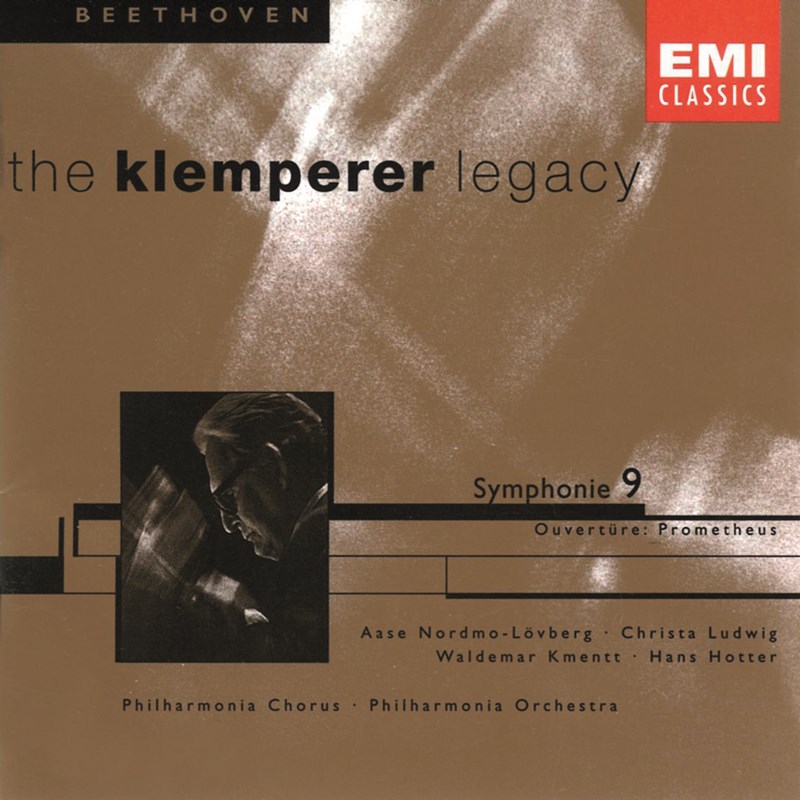
Philh Orch / Otto Klemperer
Klemperer’s performance has the feel of an utterance by the prophet who brought the tablets down from the mountain. This 1957 Philharmonia recording is an awe-inspiring experience powerfully propelled by an awe-inspiring musician.
THE COMPLETE PICTURE
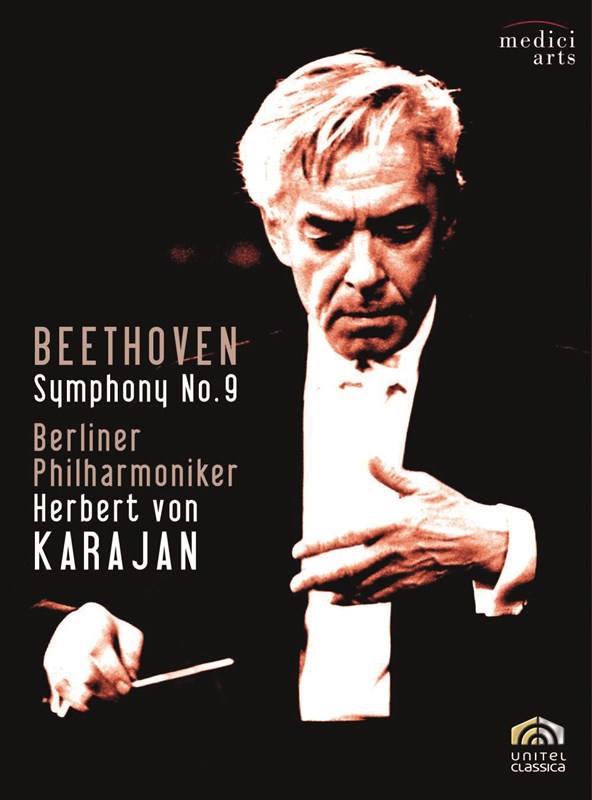
BPO / Herbert von Karajan
A matchless visualisation of the inner workings of the Ninth, Humphrey Burton’s film is a historically important record of the Berlin Philharmonic in its third great golden age playing the symphony under one of its most informed and dedicated exponents.
SELECTED DISCOGRAPHY
Recording Date / Artists / Record company (review date)
1935 VPO / Weingartner Naxos 8 110863 (11/35)
1951 Bayreuth Fest Orch / Furtwängler Orfeo C754 081B (8/08)
1952 VPO / E Kleiber Archipel ARPCD0077 (10/52)
1952 NBC SO / Toscanini RCA 19075 96477-2 (4/53)
1955 Philh Orch / Karajan Warner Classics 2564 60903-0 (11/56)
1957 Philh Orch / Klemperer Warner Classics 2435 66797-5; EMI 404275-2 (11/58)
1959 Columbia SO / Walter Sony Classical 88875 12391-2 (11/60)
1962 BPO / Karajan DG 447 401-2GOR (2/63)
1965 VPO / Schmidt-Isserstedt Decca 480 7044 (9/66)
1967 LSO / Stokowski Decca 478 8336 (10/70)
1970 VPO / Böhm DG Eloquence ELQ463 197-2 (11/72)
1972 Chicago SO / Solti Decca 483 3093 (11/72)
1974 Leipzig Gewandhaus Orch / Masur Pentatone PTC5186 146 (9/75)
1977 BPO / Karajan EuroArts 207 2408
1979 VPO / Bernstein DG 479 7708GM6 (3/80)
1987 London Classical Plyrs / Norrington Erato 562490-2 (10/87)
1989-90 BPO / Giulini DG 427 655-2GH (1/91)
1991 COE / Harnoncourt Teldec 0927 49768-2 (11/91)
1992 Orch Révolutionnaire et Romantique / Gardiner Archiv 477 8643AB5 (11/94)
2000 BPO / Abbado DG 471 491-2GH (11/08)
2008 Leipzig Gewandhaus Orch / Chailly Decca 478 3497 (A/11)
2010 VPO / Thielemann C Major 737808; 737904 (4/12)
2015 BPO / Rattle Berliner Philharmoniker BPHR160093 (6/16)
2016 Basel CO / Antonini Sony Classical 19075 87096-2 (1/19)
Thank you for visiting...
We have been writing about classical music for our dedicated and knowledgeable readers since 1923 and we would love you to join them.
To find the perfect subscription for you, simply visit: gramophone.co.uk/subscribe




